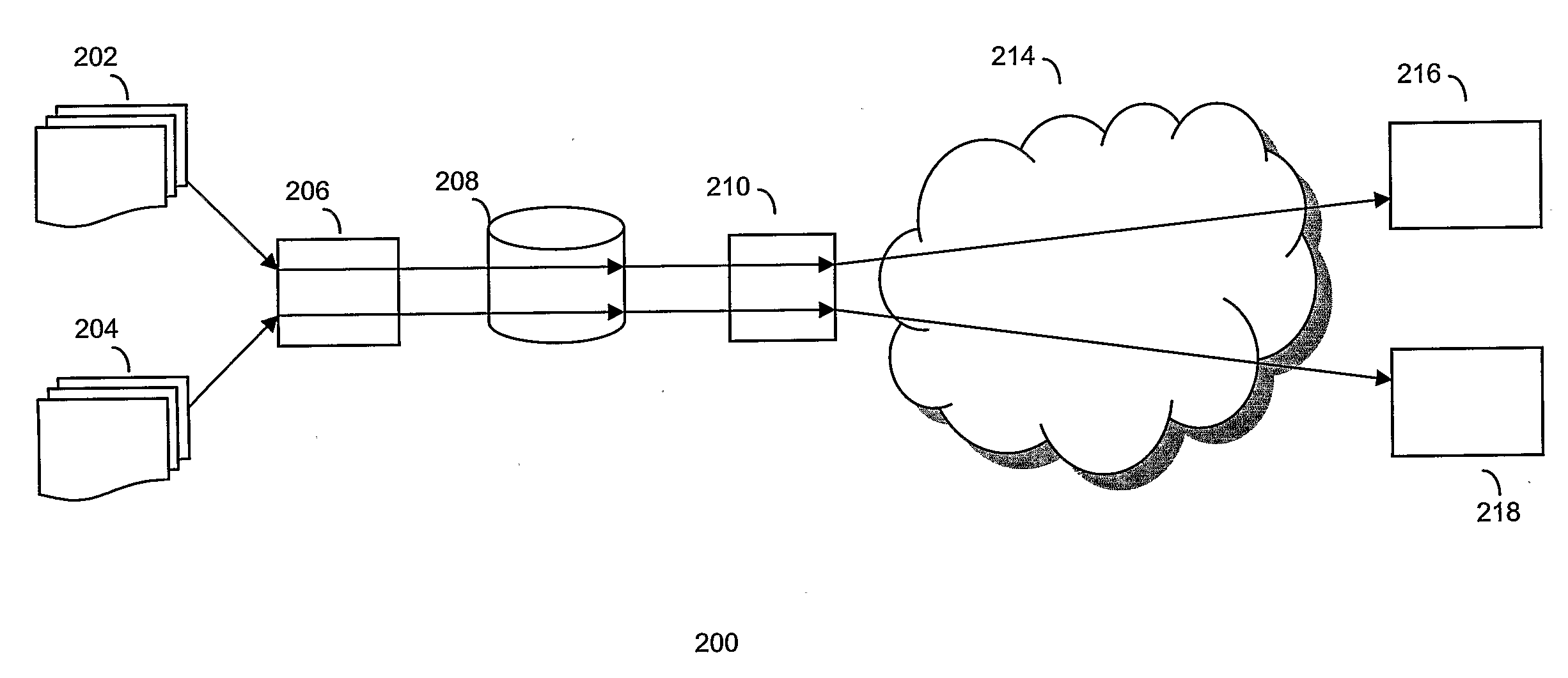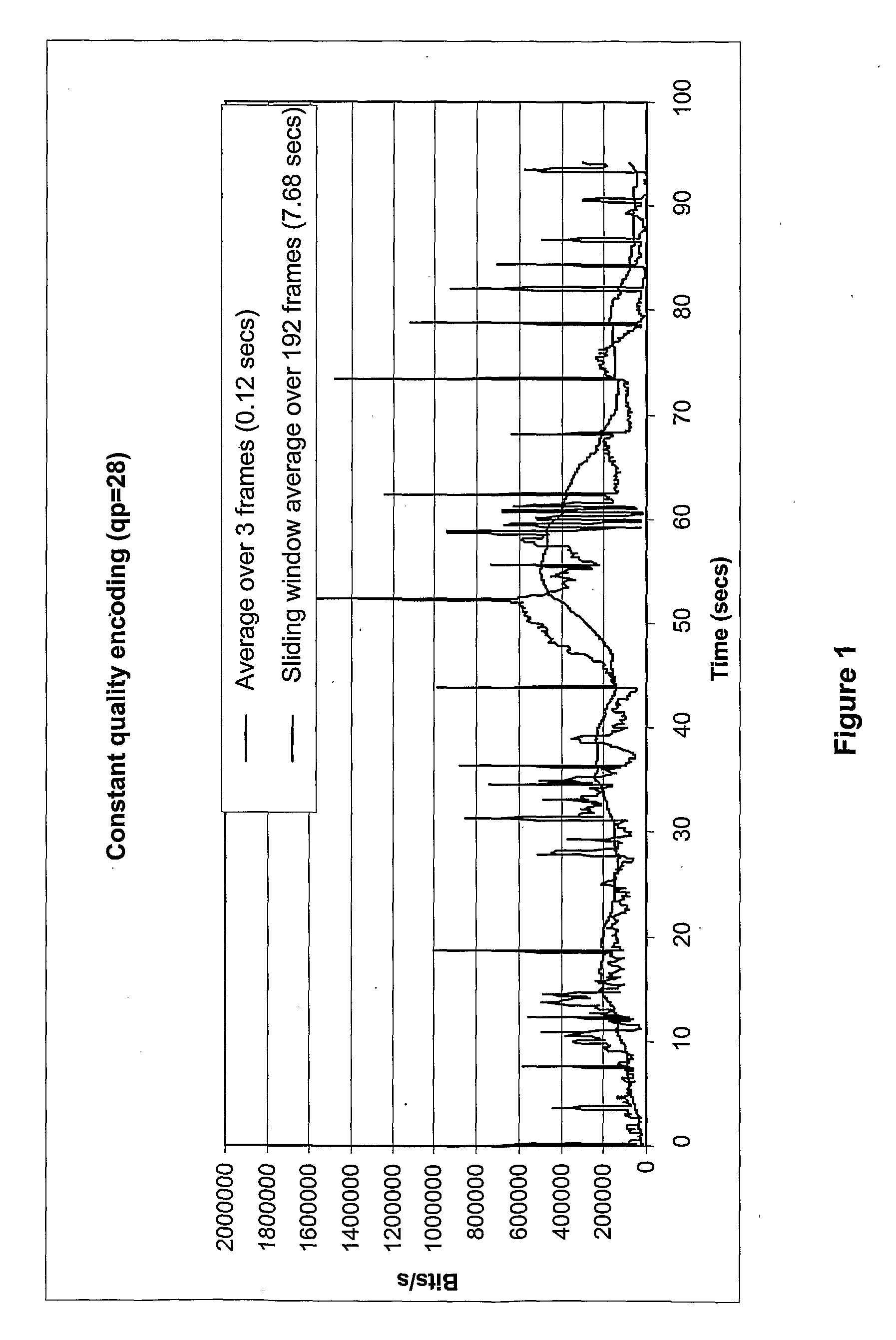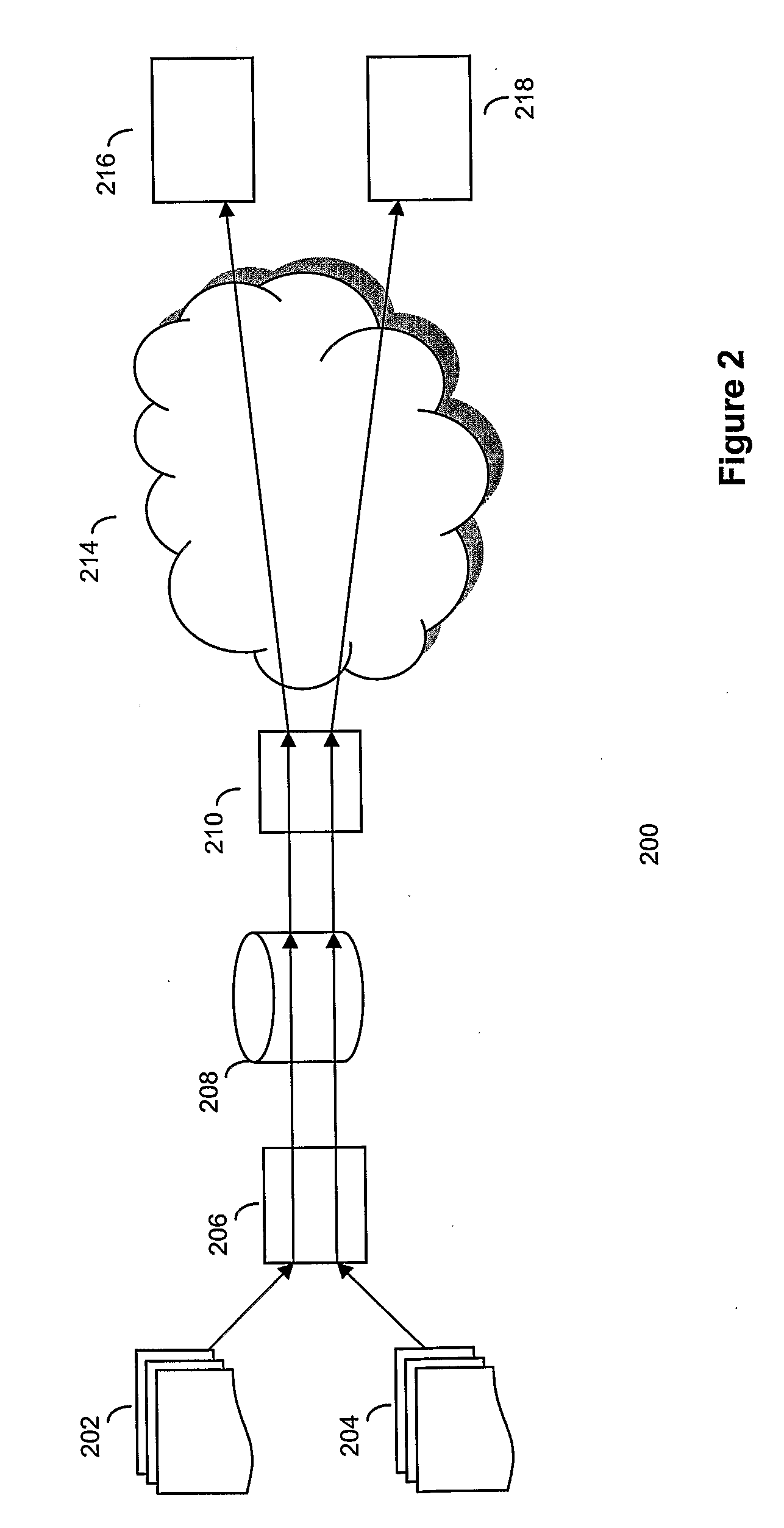Video streaming
a video signal and video technology, applied in the field of video signal transmission over telecommunications networks, can solve the problems of packet loss, delay in data packet transmission, and inability to guarantee that data will reach the destination
- Summary
- Abstract
- Description
- Claims
- Application Information
AI Technical Summary
Benefits of technology
Problems solved by technology
Method used
Image
Examples
Embodiment Construction
[0028]The present invention is described herein with reference to particular examples. The invention is not, however, limited to such examples.
[0029]It is proposed that video streams transmitted over a contended piece of network are encoded at a constant quality rather than at a constant bitrate. If a video sequence is encoded at constant quality, then the bitrate used is likely to vary dramatically. FIG. 1 shows the bitrate over a 90 second video clip encoded at a constant quality level. In this example, the quality level has been determined by setting a quantiser parameter (qp) to 28. The quantiser parameter effectively controls the quality of the encoding—the smaller the quantiser, the better the quality. This clip is typical of many video sequences, with the bitrate varying depending on how complex the scene is at any given moment in time. For example, a sequence of frames where there is much movement or action usually requires a higher bitrate to encode at the same fixed qualit...
PUM
 Login to View More
Login to View More Abstract
Description
Claims
Application Information
 Login to View More
Login to View More - R&D
- Intellectual Property
- Life Sciences
- Materials
- Tech Scout
- Unparalleled Data Quality
- Higher Quality Content
- 60% Fewer Hallucinations
Browse by: Latest US Patents, China's latest patents, Technical Efficacy Thesaurus, Application Domain, Technology Topic, Popular Technical Reports.
© 2025 PatSnap. All rights reserved.Legal|Privacy policy|Modern Slavery Act Transparency Statement|Sitemap|About US| Contact US: help@patsnap.com



